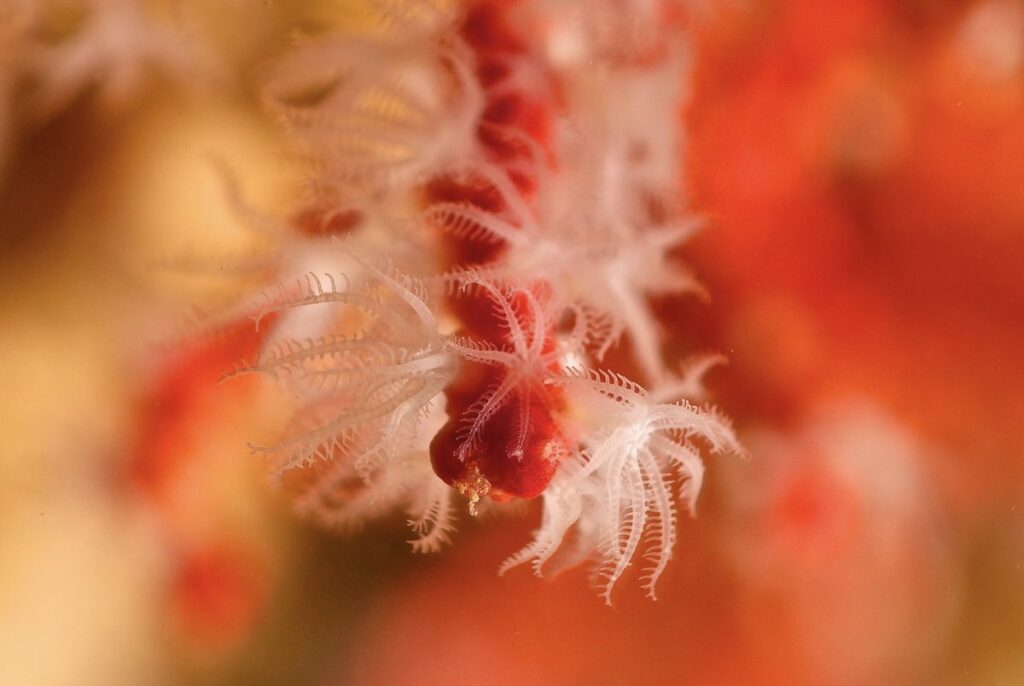A study conducted within the framework of the Catalan BioGenome Project has successfully achieved the chromosome-level reference genome assembly and annotation of the red coral (Corallium rubrum), a keystone species in Mediterranean ecosystems that is currently facing a critical situation due to overexploitation and global warming. This milestone represents a decisive step towards its conservation.
Red coral is a habitat-forming octocoral, playing a fundamental role in benthic ecosystems of the Mediterranean and adjacent Atlantic waters. It belongs to Octocorallia, a diverse clade within cnidarians that includes over 3,500 species and is the sister group of Hexacorallia (stony corals such as reef-building Scleractinia). Despite sharing many ecological characteristics with hexacorals, genomic resources for octocorals remain scarce. To date, fewer than 1% of octocoral species have been sequenced, with most belonging to the order Malacalcyonacea, leaving a significant knowledge gap in other groups such as Scleralcyonacea, to which red coral belongs.

This species faces two major threats: Overexploitation for jewelry, with a market value exceeding €1,000/kg, leading to intensive and often illegal harvesting. And marine heatwaves, which have triggered mass mortality events across thousands of kilometers of Mediterranean coastal habitats over the past decades.
Due to its slow growth rate, low population connectivity, and limited resilience, these pressures have led to a steep demographic decline, raising concerns about its evolutionary trajectory and highlighting the urgent need for conservation genomics studies.
The assembly and annotation of this genome will provide a deeper understanding of red coral’s evolutionary history, genetic diversity, and the processes shaping its population structure. With a high-quality, well-characterized genome, scientists will be able to analyze the species’ adaptive mechanisms to environmental stress, such as marine heatwaves, which have caused extensive mortality events.
This study will also have direct implications for the management and protection of the species. Understanding its genetic diversity and demographic history will help develop more precise conservation strategies, improving the management of protected areas and regulatory policies for harvesting. Additionally, genomic data will be crucial for future research on population connectivity and the species’ recovery capacity in the face of ongoing threats.
You can read the full article at: https://academic.oup.com/gbe/article/17/2/evae253/8004853
